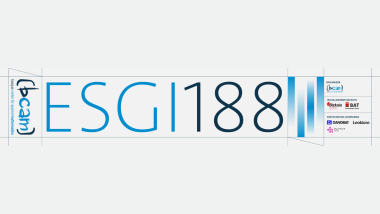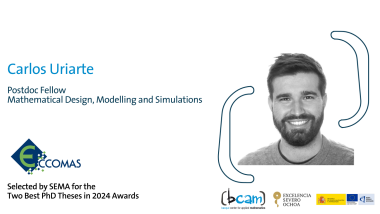BCAM and Duke University researchers introduce the first model of cognitive processing involving glial cells
- Molecular interactions between neurons and non-neuronal glial cells are at the heart of signal transmission in brain circuits. Their dysfunction has been implicated in almost the full spectrum of neurological disorders.
- The proposed computational model opens new avenues of research in Neuroscience, Medicine, Physics, and Machine Learning.

Depiction of "neuron-glial" circuits of the brain. Astrocytes (gold), neurons (blue) and their interactions are the core CPU power of the cortical circuits. Figures created by: Anais Lupu from De Pitta's Lab: https://tinyurl.com/2p9a9yhu
Maurizio De Pittà, BCAM Scientific Associate and Scientist at the Krembil Research Institute (Toronto, Canada), and his collaborator, Nicolas Brunel, at Duke University (Durham, USA), have developed the first model of cognitive circuits that include non-neuronal glial cells. The study has been published in the prestigious journal Proceedings of the National Academy of Sciences (PNAS). It proposes that glial cells, traditionally thought of as neural glue, are critical mediators in cognitive processing. The model is set to revolutionize our thinking about the brain, pioneering artificial neuronal-glial network paradigms.
When we talk about brain coding, we think of cognitive processing. Working memory is one cognitive process that enables us to hold information in mind for a while to do something ultimately. For example, counting the bouncing of a basket ball to ensure the game's rules are observed or selecting the best picture in a sequence.
Working memory is as fascinating as puzzling. For decades neuroscientists have tried to explain its biological underpinnings. The current hypothesis is that transiently active neurons could "hold the memory." Alternatively, silent, short-lived transmission patterns of neuronal signals at point-of-contacts between neurons, known as synapses, have also been proposed as memory encoding.
The challenge with such hypotheses is that these forms of working memory are theoretically mutually exclusive. Moreover, if we can observe encoding by active neurons, silent forms of working memory are difficult to measure. We can only infer them by some proxy of neuronal activity or, as the name says, lack thereof.
Neurons, however, only form half of the brain in terms of cells. The other half is composed of non-neuronal cells, collectively dubbed glia. Among glia, astrocytes are everywhere in our cortical tissue. Over the past two decades, research has found that these cells, previously thought to be bystanders of neurons, could instead be active modulators of synaptic transmission.

|
Investigators of the new study Maurizio De Pittà (BCAM- Krembil Research Institute) and Nicolas Brunel (Duke University)/ Photo: University Health Network and Duke University. |
Leveraging this modulatory aspect, De Pittà and Brunel built the first network model of neuron-glial circuits in the brain capable of encoding both active and silent working memories. “We show that astrocytes’ modulation fundamentally changes the way synapses transmit neuronal signals,” De Pittà says. “A synapse usually transmits on one channel, but by astrocytes, it can send messages on two or possibly more channels. In brain networks, this mechanism allows for silent vs. active working memory encoding to co-exist, and to know which one is going on, we can probe astrocytes.”
Including astrocytes in the current framework of working memory leads to a new theory in which neuron-glia interactions are fundamental to our brain’s computational capacity. It also identifies astrocytes as promising therapeutic targets in working memory deficits from attention deficit disorders to neurodegenerative diseases.
The type of models introduced by De Pittà and Brunel are of great interest in technological areas such as Machine Learning and Network Theory and Design. Neuron-glial networks can be seen as “networks of networks” of neurons, synapses, and astrocytes in interaction. “Thinking of each type of interaction as a layer in the network that we can train for specific purposes, pave the road for unforeseen and exciting venues in Deep Learning. We are just beginning to understand and tackle the immense potential of neuron-glial interactions in technology,” De Pittà remarks.
Maurizio De Pittà, and Nicolas Brunel. (2022). Multiple forms of working memory emerge from synapse-astrocyte interactions in a neuron-glia network model. Proceedings National Academy of Sciences (PNAS). DOI: 10.1073/pnas.2207912119. https://doi.org/10.1073/pnas.220791211
Related news
Zentroari buruz
ESGI 188 (European Study Group with Industry) Bilbon izango da 2025eko maiatzaren 26tik 30era
BCAM pertsonak




